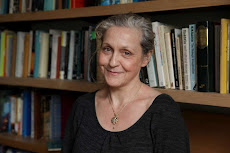One of the most photographed castles in England.
It's almost a convention, isn't it, to put against the beautiful ruin of Dunstanburgh, a lyrical description of the ancient stones, dramatic cloudscapes, and shifting beams of light?
Best of all, I like the way it lifts two fingers up into the sky.
I like to think that's in the spirit of the thing.
Built in 1313, it spoke to Edward II, arguably England's worst king ever. You can tell from the start - those two, impossibly huge gate-keeping
towers - how politically charged and significant was its
construction. How Edward was meant to know he was never safe; never commanding support or respect, when his nobles built fortresses like this.
Through those masterful stone towers, rising at England's biggest, most glorious entrance, a grand and impressive gateway, bigger than anything the king or his supporters yet made, it simply spoke to Edward an unashamed and defiant, Fuck you.
It still says it, with its bony fingers rising up, not giving in, not falling down.
The inspiration for this spectacular building of opposition, Thomas of Lancaster, declared more than a hostility in stone to his king. He did it in person. He laid his life on the line, took an army to rebellion, was defeated, and executed, in 1322.
When John of Gaunt took over the castle under Richard II, he showed his submission and lack of opposition to Richard - another doubtful monarch - by downplaying the grandeur of the castle, blocking up the entrance, and installing a modest way in, round the side.
That's somehow appropriate too. No-one saw power coming: John of Gaunt's son, Henry Bolingbroke, was more discreet in his hostility. Exiled by Richard, stripped of his father's wealth, Henry came back to England, and deposed the hopeless King Richard with virtually all of England's happy collaboration. Richard disappeared from view. Some say Henry starved him till he ate his own arms.
That story of power, defiance, success, struggle, I think you can still see it at Dunstanburgh.
(Well, as a story it might remain in your head longer than my photographs.)
Wednesday 16 May 2012
Subscribe to:
Post Comments (Atom)








No comments:
Post a Comment